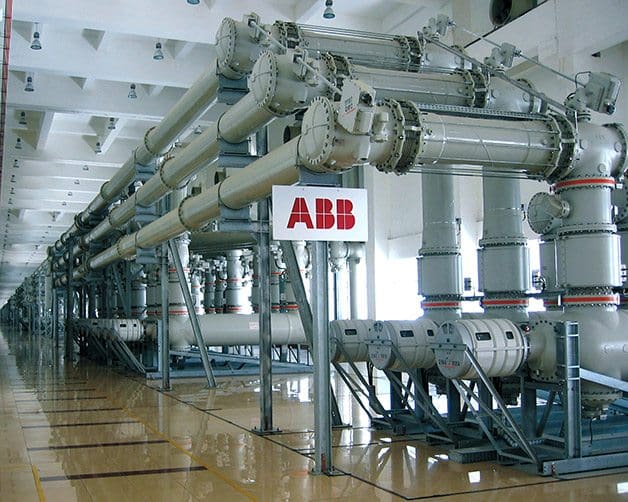Energy Efficiency in Power System
One example of efficiency measures aimed primarily at the utilities that operate the T&D system is an initiative underway at the US Department of Energy to implement new efficiency standards for distribution transformers.

These are the grey cylinders you see perched atop utility poles in residential neighborhoods, and the metalhoused units placed on cement pads at ground level.
The proposed standards will have a relatively modest impact on the efficiency of a given transformer, around 4% over current models. However, when this incremental gain is multiplied across the thousands of units operated by even a small utility, the result is impressive.
There are other initiatives at the distribution level, but if we focus our attention on the measures that have the greatest potential for improving efficiency, we inevitably must look to transmission.
There are numerous technologies that are already being applied to boost efficiency in transmission, and still more that have yet to reach full commercial implementation.
In the following sections, we explore some of these technologies:
- HVDC – High-Voltage Alternating Current
- FACTS (Flexible AC Transmission Systems) Devices
- Gas-Insulated Substations (GIS)
- Superconductors / HTS Cables
- Wide Area Monitoring Systems
1. HVDC – High-Voltage Alternating Current

Most of the transmission lines that make up the North American transmission grid are high-voltage alternating current (HVAC) lines.
Direct current (DC) transmission offers great advantages over AC, however:
- 25% lower line losses,
- Two to five times the capacity of an AC line at similar voltage,
- Ability to precisely control the flow of power.
Historically, the relatively high cost of HVDC terminal stations relegated the technology to being used only in long-haul applications like the Pacific DC Intertie, which connects the vast hydro power resources of the Columbia River with the population centers of Southern California.
With the advent of a new type of HVDC, invented by ABB and dubbed HVDC Light, the benefits of DC transmission are now being realized on much shorter distances. The Cross-Sound Cable connecting Long Island and Connecticut is one example of this technology.
2. FACTS (Flexible AC Transmission Systems) Devices

A family of power electronics devices known as Flexible AC Transmission Systems, or FACTS, provides a variety of benefits for increasing transmission efficiency. Perhaps the most immediate is their ability to allow existing AC lines to be loaded more heavily without increasing the risk of disturbances on the system.
In addition to the efficiency gains, these devices also deliver a clear reliability benefit.
3. Gas-Insulated Substations (GIS)

Most substations occupy large areas of land to accommodate the design requirements of the given facility.
However, each time power flows through a substation to step down the voltage, more energy is lost as the power flows through the transformers, switches and other equipment. The efficiency of the lower-voltage lines coming out of the substation is also markedly lower than their high-voltage counterparts.
If power can be transmitted at higher voltage to a substation that is closer to where the energy will be consumed, significant efficiency improvements are possible.
The result is that it is now possible to locate a substation in the basement of a building or other confined space so that the efficiency of high-voltage transmission can be exploited to the fullest extent.
4. Superconductors / HTS Cables
Superconducting materials at or near liquid nitrogen temperatures have the ability to conduct electricity with near-zero resistance.

So-called high temperature superconducting (HTS) cables now under development, which still require some refrigeration, can carry three to five times the power of conventional cables.
Superconducting materials can also be used to replace the copper windings of transformers to reduce losses by as much as 70% compared to current designs.
5. Wide Area Monitoring Systems

Much of the transmission system could feasibly be operated at a higher loading, were it not for reliability concerns. However, if operators were given the ability to monitor grid conditions more precisely and in real time, some of these constraints would be removed.
Wide area monitoring systems (WAMS) have many promising capabilities, one of which is line thermal monitoring. With this functionality, transmission operators could conceivably change the loading of transmission lines more freely by virtue of having a very clear understanding of how close a given line really is to its thermal limits.
HVDC Light 3D (Video)
Reference: ABB – Energy Efficiency in the Power Grid











Dear Sir,
If we have to design a Control Panel then what parameters should be taken into consideration. Can u plz tell me.
Good article
Yes, semiconductor converter-based systems (including VSC) are really great in power systems states management! I think, the 6th item should be added to the list above – energy storage devices (kinetic, lithium-ion and others).